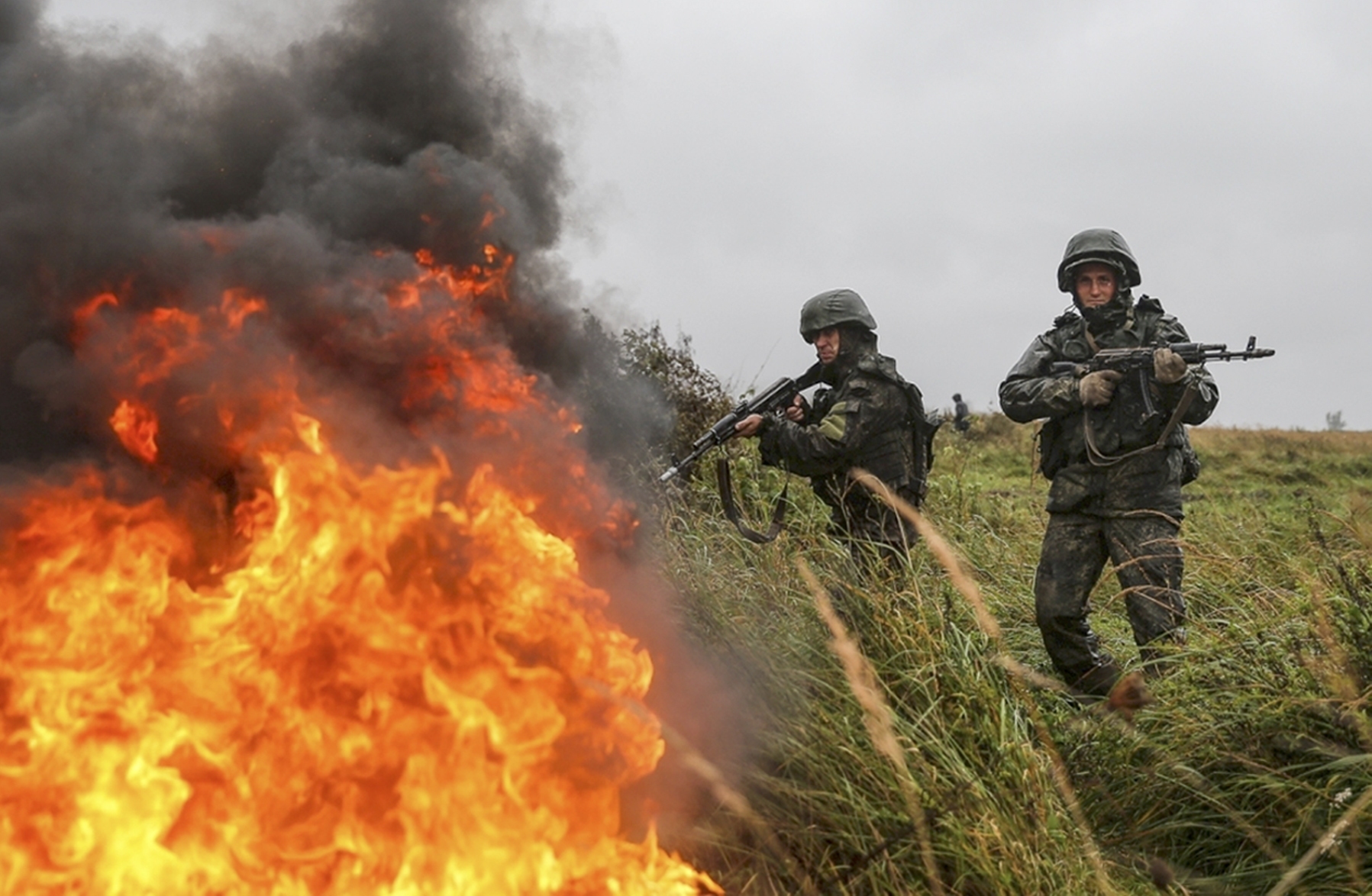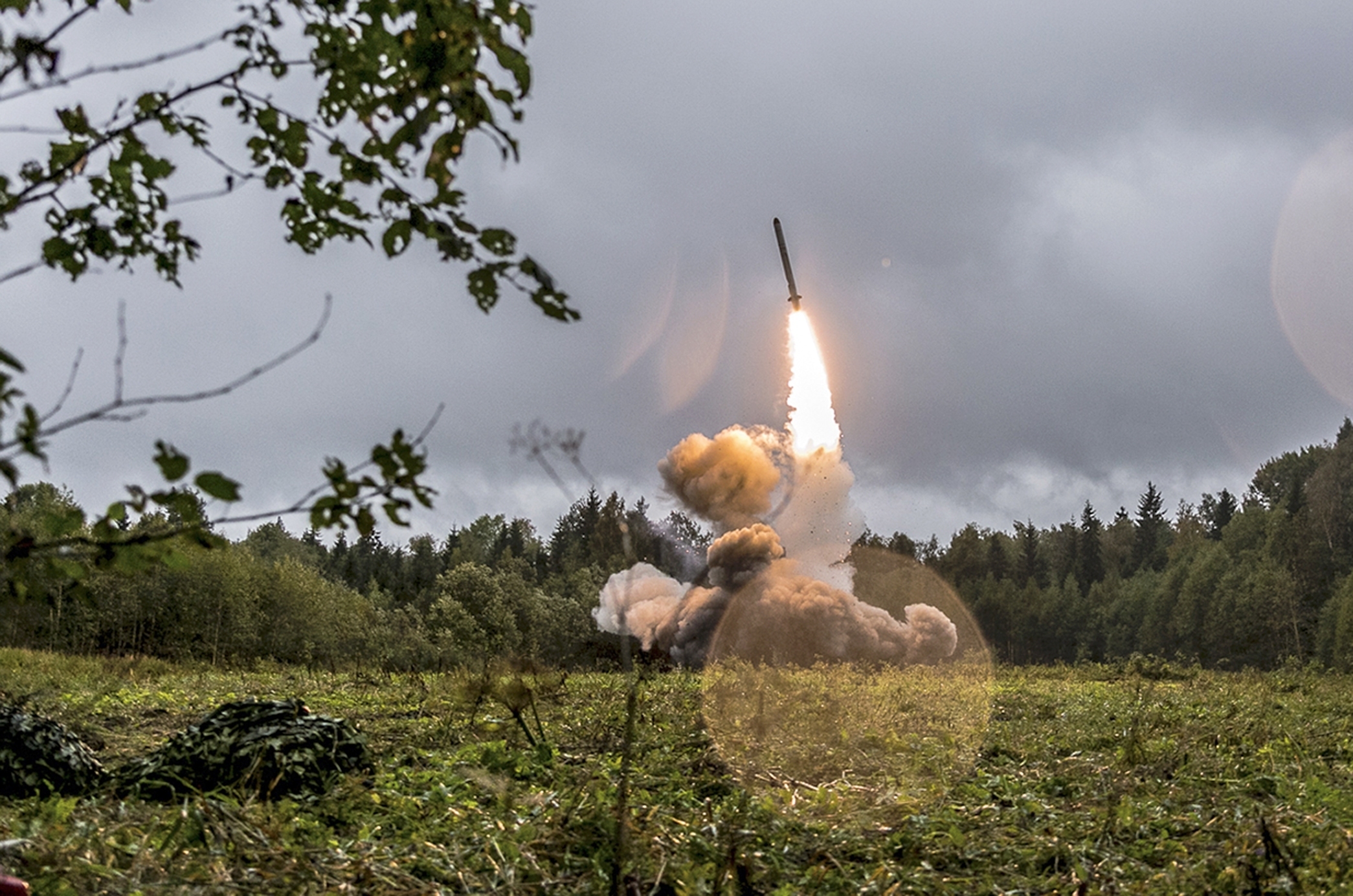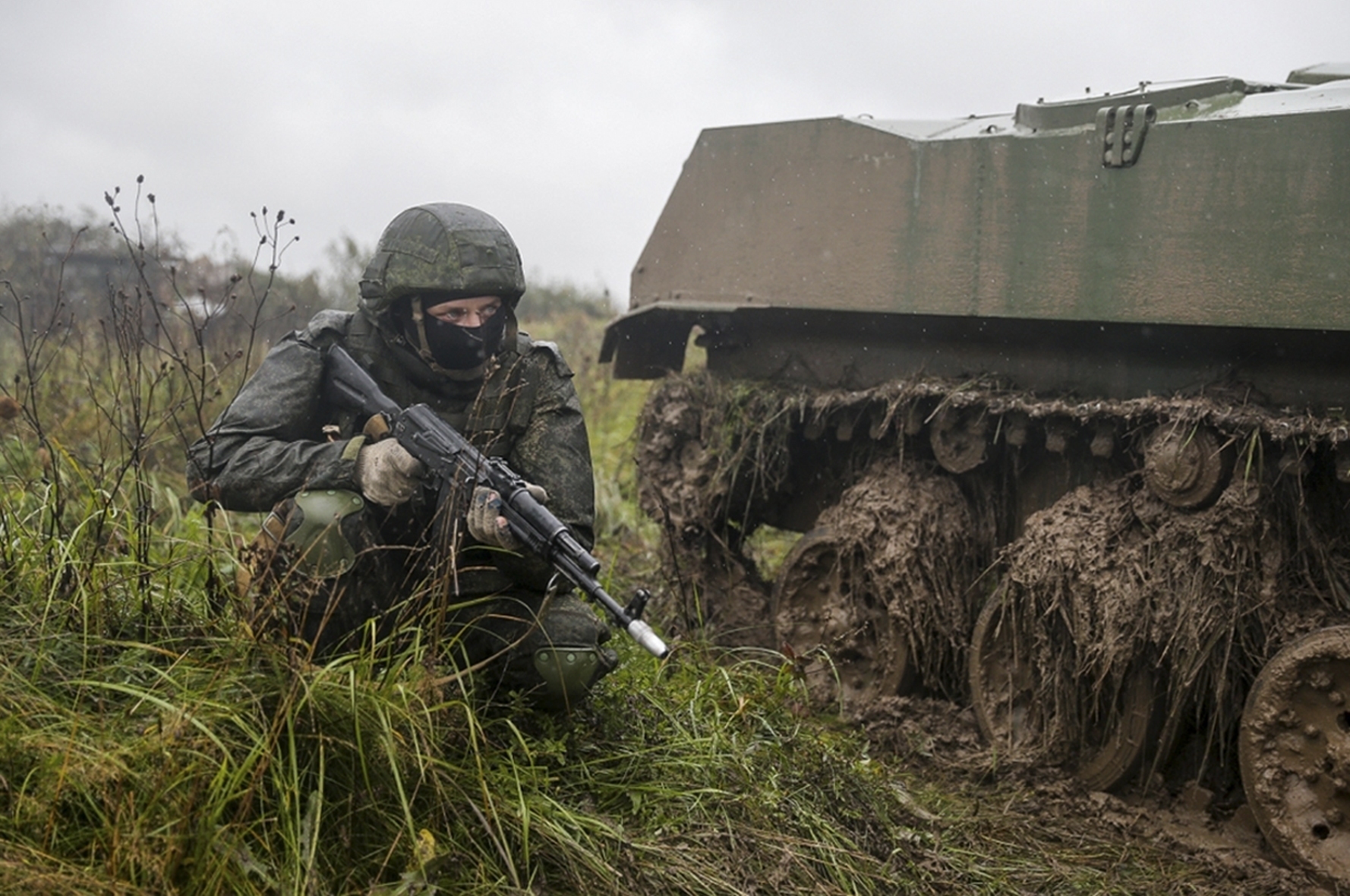Putin displays massive firepower in Russian war games on border with Europe
The Zapad 2017 exercises are viewed as some of the largest since the Cold War
— -- LUGA, Russia -- Russia's big Zapad 2017 military exercises, believed to be the largest since the end of the Cold War, entered the news again on Tuesday after a video emerged appearing to show a Russian attack helicopter firing its rockets into a group of bystanders during drills.
Russia's defense ministry confirmed the video was authentic, but the denied reports on Russian news site 66.ru, which first published the video, that two people had been injured in the incident.
The ministry told Russian news agencies the Ka-52 helicopter's targeting computer had accidentally locked onto a military truck visible in the video, near several civilian cars, as it and another helicopter took part in army exercises.
The incident took place at the same firing range where, on Monday, president Vladimir Putin watched a display of fire power as part of the Zapad exercises, that are being called some of the largest since the Cold War and have attracted intense attention in recent weeks.
The day Putin attended, dozens of planes and artillery units unleashed a barrage of projectiles onto Luzhsky firing range close to Saint Petersburg as part of a drill simulating a defense against an attack by a force intended to represent NATO.
The defense ministry said the incident involving the helicopter had not happened on Monday and other reports suggested it had occurred one or two days before.
Russia is conducting the week-long Zapad exercises with its Eastern European ally, Belarus.
The exercises have elicited criticism from NATO and the U.S., who say Russia has concealed the true number of troops taking part, and troubled some observers in Eastern Europe, where the Kremlin’s 2014 invasion of Crimea remains fresh.
Russia has said no more than 13,000 troops are taking part in Zapad, which means West, just below the threshold that would require it to invite international observers. But NATO officials have repeatedly suggested that the real number is likely far higher, potentially between 70,000 and 100,000.

The war games simulate a scenario where a hostile “Western Coalition” seeks to overthrow the Belarus government and split it away from Russia. Russian and Belarusan forces repel the fictional nation, invented for the exercises, but which bears a strong resemblance to a Western tract of Belarus. The fake country, Veishnoriya, allied with two more made-up states, stirs up a separatist insurrection.
The exercises, which displayed a reinvigorated Russian military that has undergone extensive modernization in recent years, have raised uncomfortable scenarios in the minds of leaders in the Baltic States and Poland, who see themselves reflected in the Russian-invented countries targeted in the exercises. The U.S. has sent extra fighter aircraft to Lithuania, Latvia and Estonia, and deployed 600 paratroopers to the region in response to the games. The troops represent a symbolic reinforcement of the small contingents the U.S. has already deployed in those countries, which are meant to reassure them following Russia’s invasion of Ukraine.
The exercises are a variant of Soviet-era drills and now take place every four years, but this time they have drawn intense interest, fueled by Russia's attack on Ukraine.
NATO officials have said they don’t see any indication the exercises will morph into real operations. The top U.S. general in Europe, Gen. Curtis Scaparrotti, told the Washington Post in Tirana on Monday that the exercises so far were familiar, though they were “larger than what they told us.”

“It’s following in line with what we’ve seen in the past,” Scaparrotti, Supreme Allied Commander of the North Atlantic Treaty Organization, told the Post. “They’re usually very large. They’re usually initially defensive in nature but also have an offensive portion thereafter that looks to me like a rehearsal for an attack.”
There has been much speculation, however, including among senior Eastern European officials, as to whether the thousands of Russian troops moving into Belarus for the exercises will leave after they finish. Lithuania’s president, Dalia Grybauskaite, has raised the question publicly, as has Estonia’s defense minister.
Opposition activists in Belarus, critical of the country’s long-ruling authoritarian president, Alexander Lukashenko, have warned about the possibility that Russia could lock its grip on the country by inserting troops. Lukashenko, who has followed a difficult balancing act between independence and his country’s deep integration with its giant neighbor, has recently tried to stake a more self-assertive line, refusing to recognize Russia’s annexation of Crimea and quarreling over gas deals.

Russia and Belarus have dismissed the claims, insisting the exercises are entirely defensive. The chief of Russia’s general staff, Valery Gerasimov, on Thursday called Scaparrotti to notify him of the games' start and inform him they were not targeted at any other country.
On Monday at the Luzhsky firing range where Putin was watching, Russian armor and aviation was tasked with repelling an offensive. The mock-battle lasted 45 minutes, fought over a vast expanse of mud. Relentless rain hid flights of SU-24 bombers, journalists could only see the huge blasts of their bombs down the range. Four of Russia’s new KA-52 attack helicopters rose above the tree line, hovering under the murk, punctuating an almost continual stream of ordinance, that ended with a long column of T72 tanks driving forward.
There has also been skepticism about the drills, which some view more as a propaganda exercise requiring the West’s buy-in. Finland’s defense minister, Jussi Niinistö, last week, suggested Western countries had done the Kremlin’s job by inflating the scale of the exercises.
"Western countries have taken the bait completely, they've plugged the exercises so much,” Niinistö told the Finnish broadcaster Yle.




